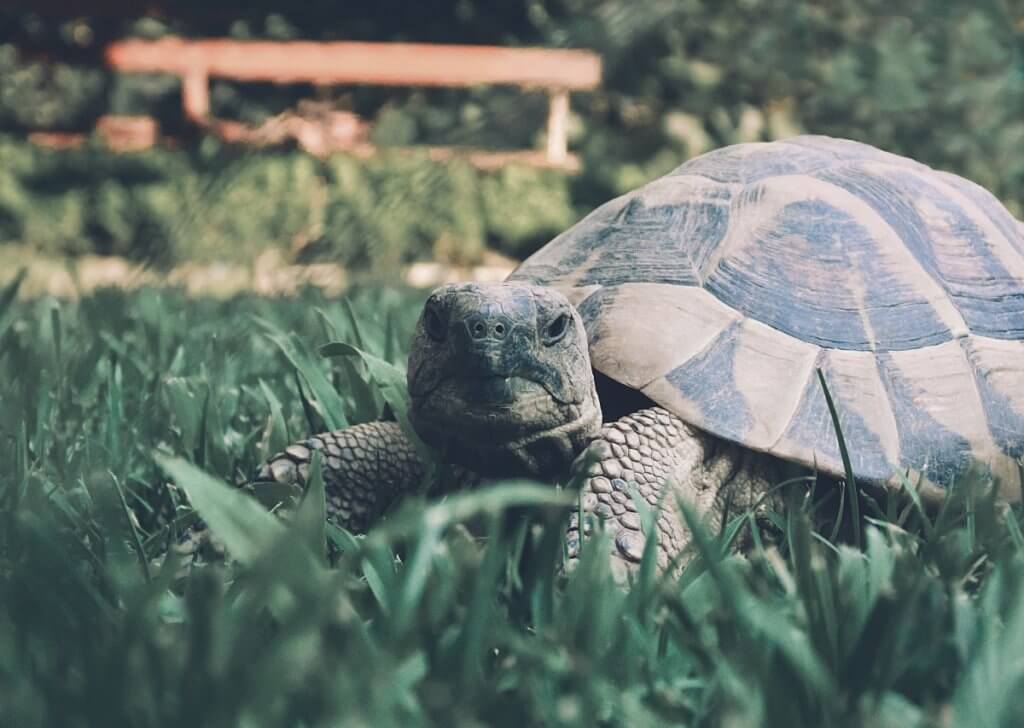Not all species of tortoises will hibernate. The main tortoises that do hibernate that are kept as pets are those from the Mediterranean, such as Hermanns, Spur-thighed and Horsfields (or Russian) tortoises. This guide is to help you ensure that your tortoise gets the best hibernation possible to allow for them to remain in the best health.
How to know if your tortoise is OK to hibernate.
Firstly it should be a species that hibernates. Secondly it should be over three years of age. Finally it should have a pre-hibernation check, ideally we would advise that this is with a vet. This will make sure that there are no obvious signs of ill health before hibernation and that they are a good weight to have enough energy stores during hibernation.
When to begin tortoise hibernation.
Hibernation should begin in late November to early December. This may be even later for younger tortoises, as discussed later. This means that tortoises in the UK will need to be housed in the autumn indoors with the correct lighting and temperatures for their species before hibernation. If they are not housed indoors then they may go into hibernation earlier due to changes in weather and so will need to be housed when they have finished hibernation.
The length of tortoise hibernation.
Hibernation should be no longer than 16 weeks but ideally should last around three months. This is because of the weather conditions of where these tortoises have originated from. If left to their own devices tortoises in the UK will often end up hibernating for five or six months and sometimes even more because of our climate. Over the years these extra months of hibernation take their toll and can lead to kidney disease, a lower immune system and other health problems. This is why only three to four months is recommended. Ideally hibernation should end around mid to late March when the weather in the UK is starting to get warmer.
We recommend starting hibernation when your tortoise is about three or four years of age, because juveniles are more susceptible to sudden changes in temperature. For the young tortoises starting hibernation for the first time we recommend just four weeks of hibernation. In the coming years we add on a week each year until they reach the three to four months advised. We aim to wake up the young tortoises about four weeks before the adults are brought out of hibernation.

Pre-hibernation fasting.
Before hibernation it is important for your tortoise to undergo a ‘fasting period’. This will be between two to six weeks depending on their size. The environmental temperature should be dropped and they should not be fed anything. They need to be bathed daily to encourage water intake. Make sure that the temperature remains about 12-13°C for about 3 weeks after their last meal to aid digestion, to avoid asphyxiation or bacterial infection if they are hibernated with undigested food.
Worming before hibernation.
Ideally faeces should be checked for signs of worms before hibernation and those affected need to be wormed. Some owners chose to worm without testing.
The best method for hibernating your tortoise.
The ideal temperature for hibernating your tortoise is between 3 and 7°C. If the temperature drops below 0°C there is a risk of your tortoise freezing, sometimes to death. Not only does this affect the organs if they do recover, but it often leads to blindness. If the temperature goes above 10°C then your tortoises metabolism will be too high and the bodies stores of energy will be used up too quickly. This may cause problems with recovering from hibernation.
Therefore we recommend fridge hibernating your tortoise. Yes, you read that right. The fridge is temperature controlled and so will ensure that your tortoise is kept at the right temperature. The best fridges are wine coolers as these are designed to never reach freezing point on their own. Before using your refrigerator it is important to have it set up and tested to ensure it is reliably staying at the right temperature. This means using a separate digital thermometer probe with a minimum and maximum temperature reading. This should be placed within the air of the fridge and not touching a surface. Often the thermostats in the fridges are not accurate.
One main concern with fridge hibernation is airflow. Firstly a hibernating tortoise has low oxygen needs. Secondly this is easily overcome by opening the fridge door for a minute or two around 3 times per week.

Other tortoise hibernation methods.
Tortoises can be hibernated in insulated boxes or by being buried in the ground. Both these methods have problems and so are not recommended.
The tortoise hibernation box.
Tortoises can be hibernated in cardboard, plywood or plastic boxes. They should be big enough for the animal to turn in and deep enough to prevent escape. They should be kept in a 50/50 mix of play sand and soil or shredded paper, just enough to allow the tortoise to bury itself.
Monitoring during hibernation.
If your tortoise wakes during hibernation they should not be put back to sleep again but woken up, fed and housed indoors with the correct heating and lighting. Tortoises should be weighed before hibernation and once per week during hibernation. If a tortoise loses more than 10% body weight during hibernation or passes urine then they need to be woken up early.
For more information click here.

